Trump Tariffs on Russia’s Oil Buyers Bring Economic, Political Risks
From punishing Brazil to trying to curb imports of fentanyl, U.S. President Donald Trump has wielded the threat of tariffs as an all-purpose foreign policy weapon.
NOAA IR Satellite 1145Z 26 January 2013 showing 930 mb hurricane force storm.
Last weekend saw an unusually intense hurricane force extratropical storm low over the North Atlantic. An active weather pattern started showing up on computer models more than a week earlier and by the 21st, the official NOAA “96 hour North Atlantic surface forecast chart” showed a rapidly deepening 977mb storm low over the central North Atlantic for 12Z Friday January 25th moving northeastward with a forecasted central pressure dropping to 933mb by 12Z on Saturday the 26th!
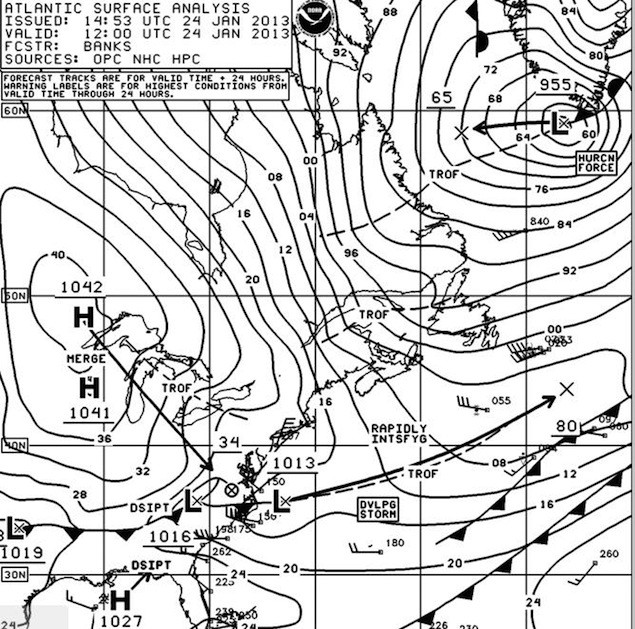
This particular system began as a weak 1023 mb disturbance along an Arctic front that was moving south and east across the Central US on the afternoon of the 23rd.
By Thursday, the 24th the rapidly moving disturbance had passed off the Middle Atlantic coast and had deepened to 1013mb. By Thursday night it was becoming apparent that this storm could approach historic strength during the following 72 hours and the official NOAA forecasts predicted that this storm would deepen to near 977mb by 12Z Friday (Jan. 25th) and as low as 920 or 924 mb by 12Z Saturday with hurricane force winds up to 75-80 knots possible.
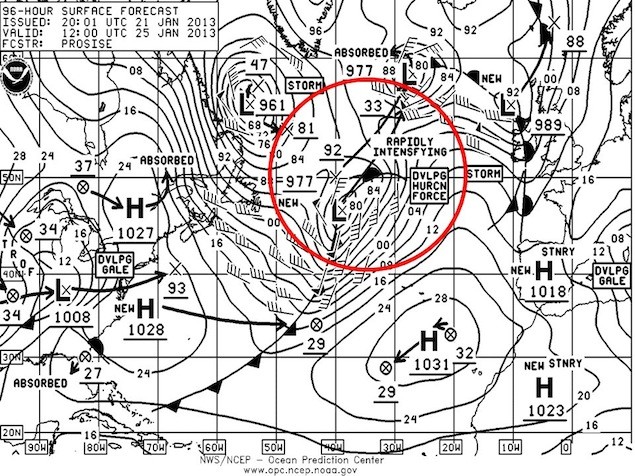
Once off the coast the developing disturbance moved very rapidly (at nearly 50kts) towards the east-northeast deepening quickly to 984mb by 12Z Friday.
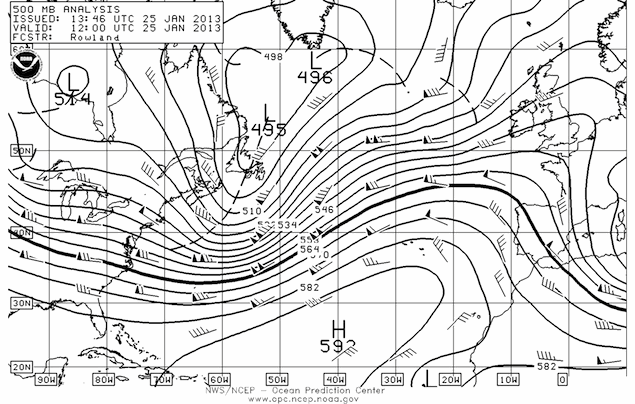
The stage was set for very rapid (explosive) deepening and over the next 24 hours the central pressure of this now large hurricane force storm dropped 54 mb to 930mb!
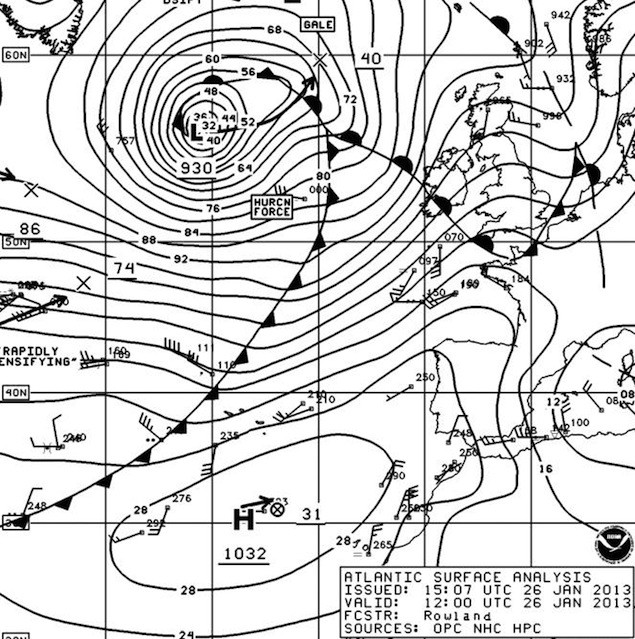
This generated huge waves of up to 18 meters (59 feet) as depicted on the NOAA OPC Sea State Analysis on the 26th. Wave heights on the NOAA chart here are significant wave heights which are defined as the average of the 1/3 highest waves. This means that there was a 1 in 10 chance for a wave of almost 23 meters (75 ft.) and a 1 in 100 chance that a wave could have been as high as 30 meters (98 ft.).
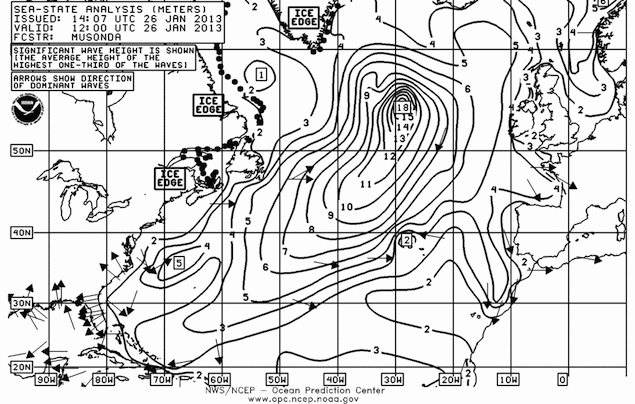
Although this was a very intense storm, it was not a record. The all-time record for North Atlantic extratropical storms was the Braer Storm of January 1993 that reached a min pressure of 914 mb (26.99 in Hg) on January 10th. The 1993 storm caused blizzard conditions across much of Scotland and also led to the final breakup of the oil tanker MV Braer, which had been stranded in rocks off the Shetland Islands by a previous storm.
Wunderground meteorologist Jeff Masters listed 5 storms in his blog that reached central pressures between 920 and 926 mb since the late 1800s, as cataloged by British weather historian Stephen Burt.
NOAA Verification
NOAA OPC has a web page where you can verify how good or bad their graphical forecasts were. For this storm the NOAA OPC 48 hour forecast was for 924mb min pressure at 12Z on the 26th which turned out to be a bit too aggressive as the actual storm verified at 930mb. Given that this was a system at the very deep end of the pool, the forecast was not too far off.
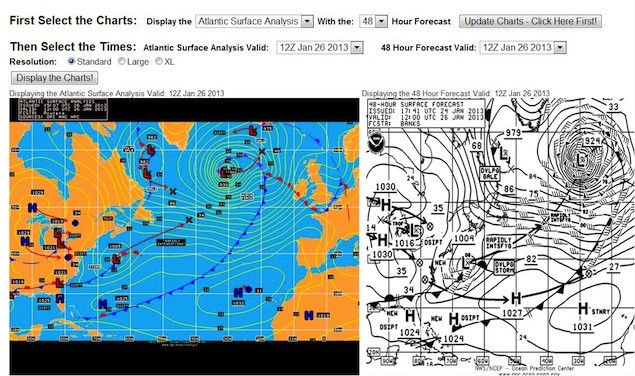
Via Ocean Weather Services Blog
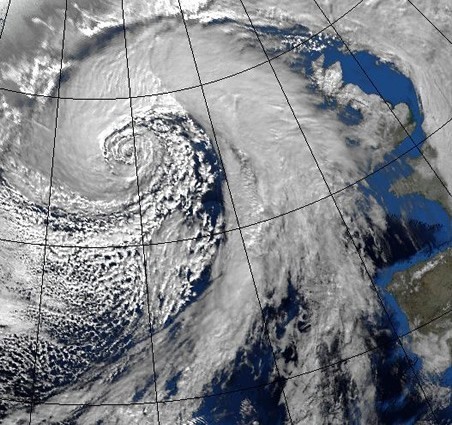

Sign up for gCaptain’s newsletter and never miss an update

Subscribe to gCaptain Daily and stay informed with the latest global maritime and offshore news
Essential news coupled with the finest maritime content sourced from across the globe.
Sign Up